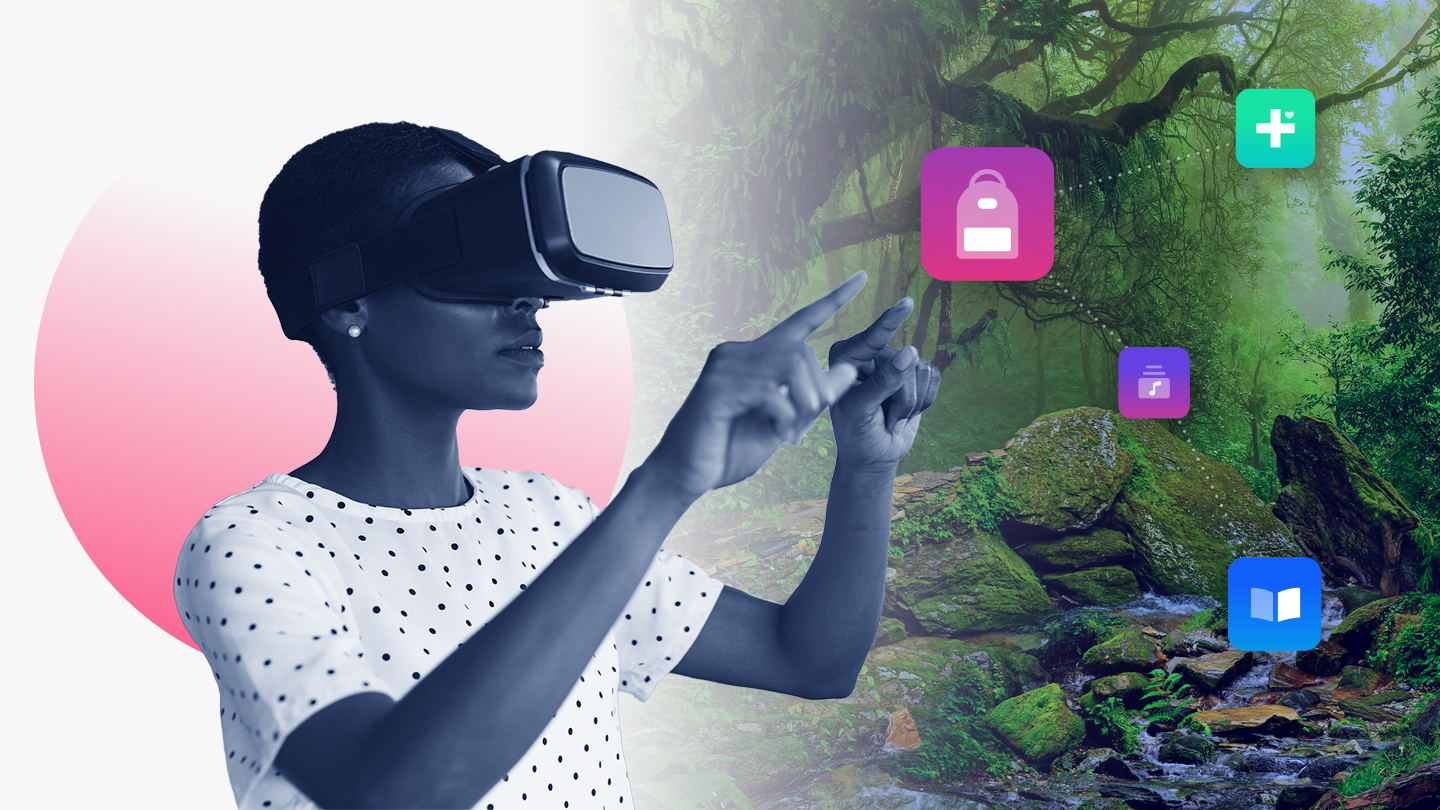Gaming, Industry News & Events
Is Your App Ready for the Metaverse? Here’s What You Need to Know Now
Nov 16, 2021

Gaming, Industry News & Events

On October 28, Facebook CEO Mark Zuckerberg announced that Facebook would now be known as Meta, and that it would play a key role in the formation of a metaverse. What’s the metaverse, you ask? The newly-minted Meta describes it as “a place where we’ll play and connect in 3D.”
Announcing @Meta — the Facebook company’s new name. Meta is helping to build the metaverse, a place where we’ll play and connect in 3D. Welcome to the next chapter of social connection. pic.twitter.com/ywSJPLsCoD
— Meta (@Meta) October 28, 2021
Essentially, we’re talking about a completely immersive internet, one that goes beyond the confines of your screen. You’ll need a VR headset or (when they’re available) a more comfortable and portable pair of AR glasses to dive in. Once there, you’ll experience an all-encompassing virtual reality, where you’ll see, hear, and feel things.
Facebook is already diving into this virtual world with Horizon Workrooms, a VR-enabled meeting application. The app allows users to meet online as expressive, cartoon-like avatars and speak to each other and share documents as if in the same room. The person sitting next to you is recognizable as your colleague, and when they speak to you, it sounds like they’re actually next to you. An Engadget reporter noted that there are still plenty of kinks to work out, “But when it was running smoothly, it was the closest I’ve felt to being in a live meeting since March of last year.”
The possibilities of the metaverse extend way beyond virtual conference rooms. The visions are ambitious and vast — the stuff of “Ready, Player One” or “Avatar.” While this might seem creepy and downright dystopian for many of us, Zuckerberg, Tim Sweeney (of Epic Games), Microsoft, and the team behind Roblox see it as something with endless potential benefits for humanity. “It’s the convergence of the digital and physical worlds,” Sam George, Corporate Vice President, Azure IoT wrote on Microsoft’s Azure blog. “By creating live, data-bound digital replicas of physical environments, we can apply modern software techniques — analytics, simulation, autonomous control, and interactions — in mixed reality to achieve previously impossible benefits.”
What might that look like? George offers these examples:
Digital twins enable you to create rich digital models of anything physical or logical, from simple assets or products to complex environments. These environments can be energy distribution grids, warehouses, or factories — anything that’s important to you. Once it’s modeled, it can be brought to life and synchronized with the physical world using two-way IoT connections. This initial binding of the physical and digital is foundational to enabling metaverse apps.
Epic Games has a much more exciting view of our future in mixed reality. They see a world where Fortnight players can engage in epic battles in massive virtual arenas. They can drive Ferraris, or even become the notorious Marvel mega-villain, Thanos. Fortnight has already hosted virtual concerts featuring big-name stars like Ariana Grande as “world-building” events. Other artists and platforms have embraced the virtual concert as well, and it seems like an idea that could have enormous potential in the metaverse.
The metaverse is all things to all people, with use cases for everything from online shopping to mobile gaming. And that’s where apps come in.
Everything in the metaverse is enabled by apps. Whether it’s for gaming, conferencing, shopping, or some other function, apps don’t simply “power” these experiences, they create them. Metaverse apps can potentially harness all of the most exciting features of smartphones, wearables, headsets, and even the IoT — from visual to audio, from biometrics to location tracking, and well beyond. Fitness apps can put the user in a gym with a personal trainer monitoring their heart rate, correcting their form, and urging them to sweat through one more rep. Retail apps can bring users into the store to shop for special collections and try clothing on an avatar that reflects their actual weight and measurements. Realtors can offer true virtual tours; car dealerships can offer true virtual test drives. The possibilities for productivity, digital healthcare, and even industrial applications seem limitless.
This may be the future of apps, and it’s something developers should start thinking about today. Is your app ready for the metaverse? Do you know what you don’t know?
With that said, here are some resources for you to start learning more about the metaverse. Since fully functioning AR glasses are still a few years out, there aren’t many specs to work with, but it’s never too early to start learning and jotting down ideas.
One important note as you proceed: All of these articles contain great information and examples, but you may want to take the opinions expressed with a grain of salt. There’s a lot of trepidation when it comes to the metaverse, and a lot of negativity. Read with an open mind and keep learning.